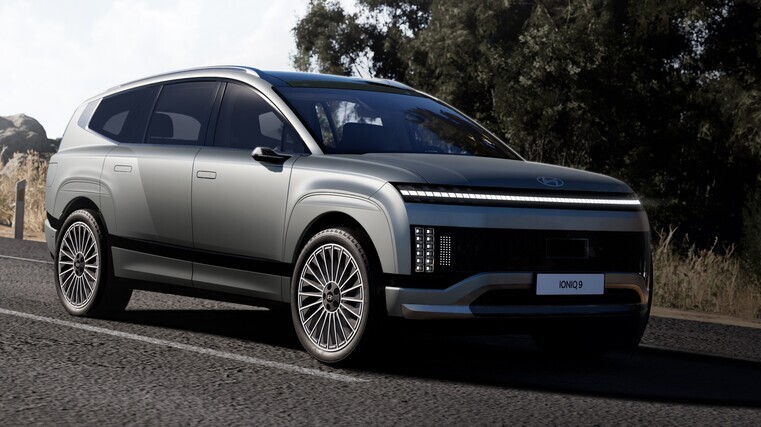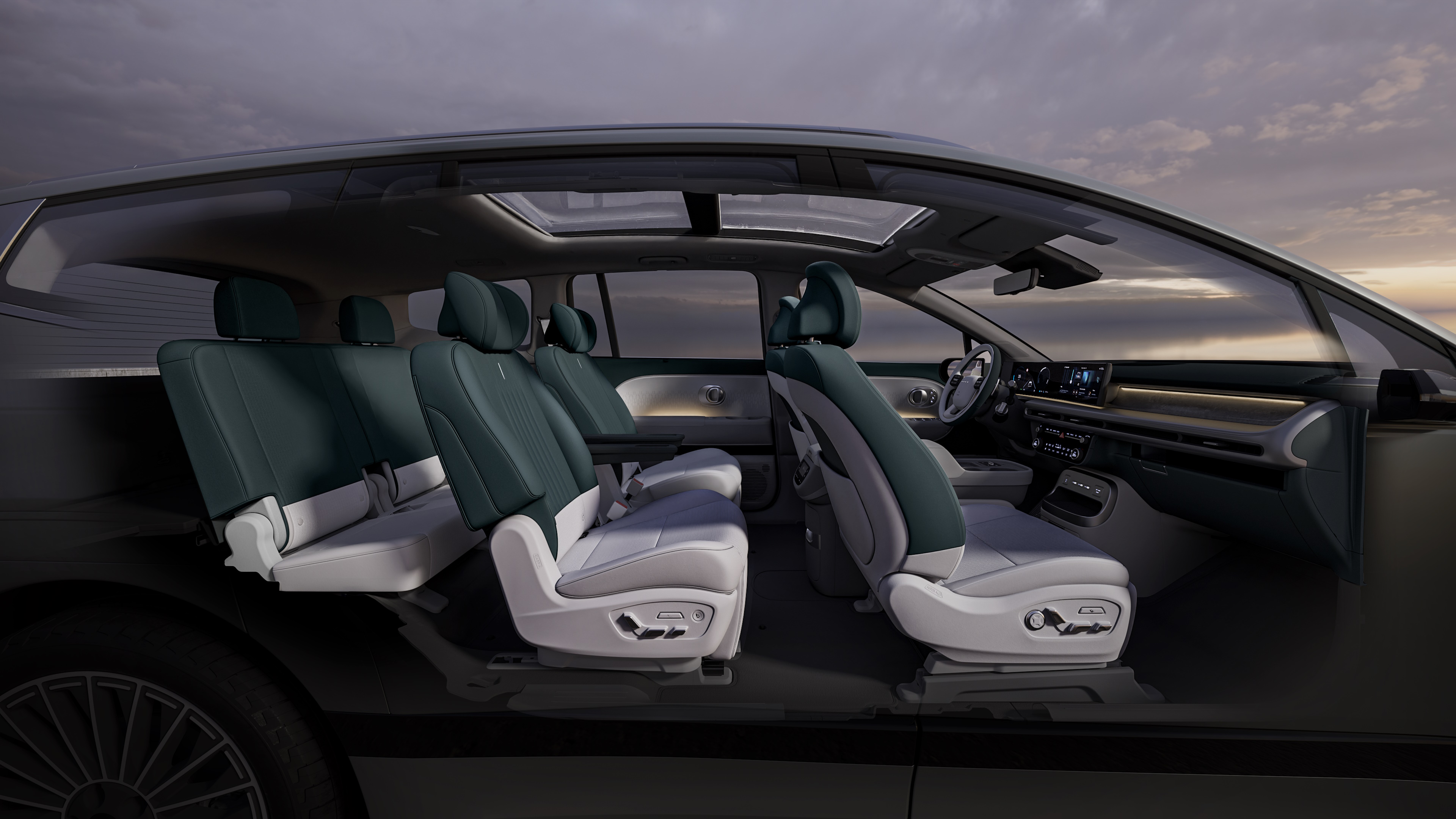Electric range tops 620km

Hyundai has unveiled the Ioniq 9, its three-row, all-electric SUV with “expansive” space inside and a range of up to 620km.
The vehicle is underpinned by the marque’s E-GMP architecture, which provides an optimised gear ratio for hill climbing and application of a two-stage inverter for improved efficiency.
A fully encapsulated PE system helps reduce motor sound, while improved acoustic laminated glass, triple sealing and a reinforced plate in the A-pillar area help eliminate road and wind noise and vibration inside.
The platform boasts a high-capacity, high-voltage battery for extended range, and a flat floor for added passenger comfort and increased cargo space. Collision safety and durability have been improved by a robust body structure designed for optimal crash-energy distribution.
The PE system’s high-voltage, floor-mounted NCM lithium-ion battery offers 110.3kWh of system energy.
Other key statistics for the Ioniq 9 include a WLTP-estimated all-electric range of 620km and WLTP-targeted energy consumption of 194Wh/km for the long-range rear-wheel drive (RWD) model with 19-inch wheels.
The SUV charges from 10-80 per cent in 24 minutes using a 350kW charger, while the platform’s vehicle-to-load convenience feature and 400V/800V multi-charging capability “lower the barriers” to EV adoption.
A 160kW rear motor powers the long-range RWD model, while the long-range AWD alternative features an extra 70kW front motor, and performance AWD models boast 160kW motors at the front and rear.
The performance model can accelerate from 0-100kph in 5.2 seconds and accelerates from 80-120kph in 3.4 seconds.
Meanwhile, the long-range AWD variant does the dash in 6.7 seconds and the long-range RWD takes 9.4 seconds. Their 80-120kph times are 4.8 and 6.8 seconds respectively.
The SUV will go on sale in South Korea and the US in the first half of 2025, with rollouts in Europe and other markets after that. Detailed specifications will be unveiled closer to launches.
Driver-centric technologies
The Ioniq 9’s column-type shift-by-wire system is integrated with the ignition button for intuitive operation and to save space. It provides haptic feedback in reverse.
The system has been enhanced for responsiveness, while the braking system has been improved for increased stopping power and efficiency.
A chassis domain control unit enhances performance with features such as dynamic torque vectoring for improved handling, and lateral wind-stability control for high-speed stability.
The SUV also has a terrain traction-control system for rough roads, and an auto-terrain mode that uses AI to recognise the road surface and select the optimal driving mode.
‘Lounge-like’ interior
The marque says the Ioniq’s interior design is characterised by “elliptical elements and calming tones to create a lounge-like atmosphere”.
A flat floor accommodates seating arrangements for six or seven occupants. “Relaxation” seats in the first and second rows can fully recline and offer a leg rest for optimal comfort, allowing up to four people to rest during charging depending on the configuration.
The SUV also boasts 1,899mm of headroom and 2,050mm of legroom when the second and third rows are combined.
Relaxation seats offer Hyundai’s first “dynamic body care”, which includes a touch massage function. The system uses pressure and vibration to stimulate blood flow and circulation to reduce fatigue on long drives.
The Ioniq 9 introduces second-row swivelling seats so people in the second and third rows can face each other when the vehicle is stationary.
A slidable Universal Island 2.0 console provides “impressive” storage and delivers walk-through front-row seating to enhance accessibility and convenience. Bidirectional armrests can be opened from the front and rear for easy access to the console from the second row.
The Universal Island 2.0 can be moved by up to 190mm so passengers in the second row can access it easily. The console also provides 5.6l of storage in the upper tray and 12.6l in the lower sliding tray.
With the third-row seats folded flat, the trunk can accommodate up to 1,323l of luggage space. With all three rows in place, there is 620l of luggage room. room. Additionally, the front trunk offers up to 88l for RWD models and 52l for AWDs.
The Ioniq 9’s panoramic curved display, floating dashboard, slim air vents and ambient interior lighting create a “futuristic interior atmosphere”.

Sleek and sophisticated image
The Ioniq 9’s exterior reflects Hyundai blending aerodynamic innovation with “sophisticated” styling. Its front-end features parametric pixels integrated into the LED units and lower fascia. The car has a low drag coefficient of 0.259Cd when fitted with digital side mirrors.
Energy usage efficiency is enhanced by balancing airflow under the body, and reduced wheel and tyre resistance.
To address these needs, a new dual-motion active air-flap system has been applied for the first time. Other aero-optimising solutions include a 3D-shaped underbody cover, aerodynamic wheels and hidden antennas.
The Ioniq 9 is the first Hyundai to eliminate the roof antenna by dividing its functions between the windshield cover for GPS and satellite radio, the instrument panel for connected car services, and tailgate glass for FM/AM and digital multimedia broadcasting.





